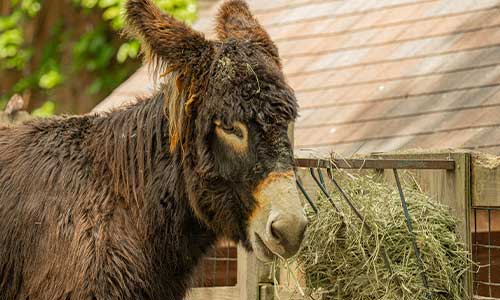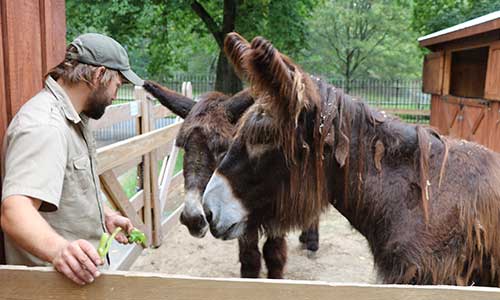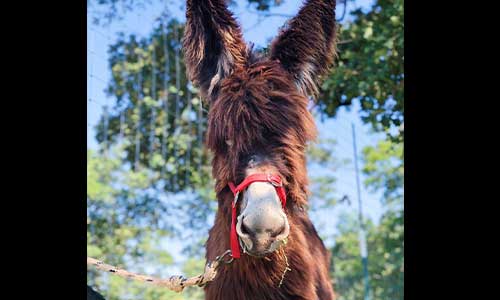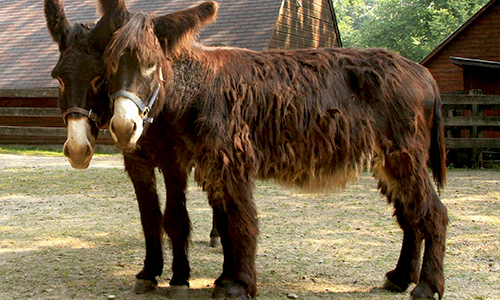Conservation:
This species nearly became extinct after World War II when motorized vehicles began to take over and the mule demand collapsed, and in 1980 fewer than 80 Poitous were still living. In France, the Poitou donkey has been under conservation watch since the late 20th century.
Appearance:
Poitou donkeys have dark brown, black or grey-colored shaggy coats that hang in long cords or dreadlocks. Their manes are long and typically fall onto one side of their neck. They have long shaggy-haired ears, large heads and strong necks (which help them pull heavy weights). Their snout tips are typically bare or white-haired, and they have rings around their eyes.
Size:
Weight: Approximately 1,200 pounds
Height: 4.4 to 5 feet
Diet:
Various grasses and hays.
Reproduction:
The gestation period of Poitou donkeys is 11 to 14 months, resulting in a single foal. Twins are rare.
Behavior:
Temperament is described as “friendly and docile.”
Habitat/Range:
Habitat: Domesticated
Range: Originally native to France. Exported throughout the globe.
Role in their habitat:
Originally used as a “working animal,” now they're primarily (and strictly) used as a breeding animal.
Fun Facts:
- France has considered Poitou donkeys as a national treasure.
- Typically the Trait Mulassiere horse is bred with these mules, as it’s the original dam breed (the same breed as the Poitou’s mother); this horse is also critically endangered.
- In France, this breed is referred to as Baudet du Poitou. “Baudet” means “sire of mules.”
- This breed was developed in the Poitou region of western France. Mule breeding has been documented for over 1,000 years.










